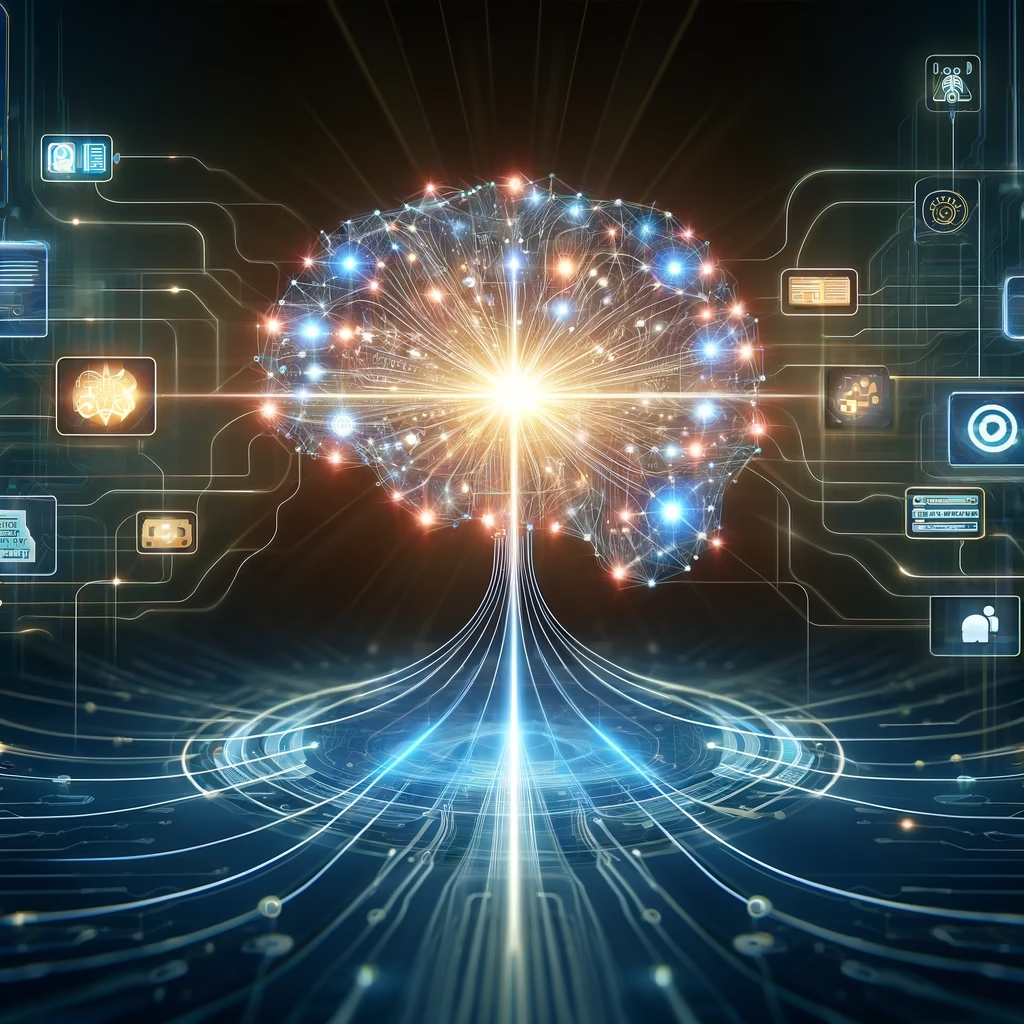Multimodal models have gained significant traction in the AI landscape, particularly after the success of models like GPT-4, Gemini, and others capable of processing text, images, audio, and video simultaneously. This article will explain:
- What is a multimodal model?
- How does it work internally?
- How to develop a multimodal model?
- How does it store and manage information?
Table of Contents
What is a Multimodal Model?
A multimodal model is an AI system that can process and understand different types of data simultaneously, such as:
| Modality | Examples |
|---|---|
| Text | Natural language, documents, code |
| Images | Photos, diagrams, charts |
| Audio | Speech, music, environmental sounds |
| Video | Visual and auditory streams |
| Sensor Data | IoT, healthcare, automotive systems |
Examples of Multimodal Models
- GPT-4 with Vision: Text + Image understanding.
- Gemini: Text + Image + Video.
- CLIP (OpenAI): Image + Text pairing.
- Flamingo (DeepMind): Visual language model.
How Multimodal Models Work
1. Modality Encoding (Feature Extraction)
Each input type (text, image, audio) is first converted into a numerical representation (embedding). Different encoders handle different modalities:
| Modality | Encoder Used |
|---|---|
| Text | Transformers (e.g., BERT, GPT) |
| Images | Convolutional Neural Networks (CNNs), Vision Transformers (ViT) |
| Audio | Spectrogram CNNs, WaveNet, Wav2Vec |
Example:
Text -> Tokenized -> Embedding
Image -> Pixels -> Convolutional layers -> Embedding
Audio -> Waveform -> Spectrogram -> Embedding
2. Multimodal Fusion (Aligning Representations)
After extracting features from different modalities, they need to be combined into a shared latent space. Common techniques:
| Fusion Type | Description |
|---|---|
| Early Fusion | Combine raw data before encoding. Rarely used. |
| Mid Fusion | Combine embeddings during model processing. Most common. |
| Late Fusion | Process modalities separately and merge final outputs. |
Example (Mid Fusion):
Text Embedding -> Transformer Layer
Image Embedding -> Transformer Layer
Audio Embedding -> Transformer Layer
Multi-Head Attention -> Fusion -> PredictionCross-attention mechanisms are often employed, like in Flamingo, to enable information exchange between modalities.
3. Unified Representation and Output
The fused representation allows the model to generate text, predict labels, or produce other outputs based on all available information.
Example:
- Input: Image of a cat + “What is this animal?”
- Model: Combines image and text features -> “It’s a cat.”
Developing a Multimodal Model
Step 1: Dataset Preparation
Multimodal models require aligned data. For example:
- Image + Caption (COCO, Flickr30k datasets)
- Video + Transcript
- Audio + Text labels
Common Datasets:
| Modality Combination | Dataset Example |
|---|---|
| Text + Image | COCO, Visual Genome |
| Text + Video | HowTo100M, YouCook2 |
| Text + Audio | Librispeech, AudioSet |
Step 2: Choosing the Model Architecture
| Approach | Example Models |
|---|---|
| Single-Stream (Unified Encoder) | ViLT, ALBEF |
| Dual-Stream (Separate, with Fusion) | CLIP, Flamingo |
Single-stream models process everything together. Dual-stream models handle each modality separately and merge later.
Step 3: Pretraining
Self-supervised learning (SSL) is often used:
- Contrastive Learning (e.g., CLIP): Align image and text embeddings.
- Masked Modeling (e.g., BEiT, BERT): Predict missing parts of data.
Step 4: Fine-tuning
Task-specific tuning on multimodal datasets for applications like:
- Visual Question Answering (VQA)
- Image Captioning
- Audio-Visual Speech Recognition
Data Storage and Information Handling
1. Embedding Storage
During training, data is converted into embeddings (dense numerical vectors). These embeddings are stored and accessed in different ways:
| Component | Storage Format | Examples |
|---|---|---|
| Text Embeddings | Tokenized vectors | TensorFlow, PyTorch Tensors |
| Image Features | Pixel arrays -> Convolutional features | NumPy, HDF5 |
| Audio Features | Spectrogram -> Embedding | .npy, .pt files |
Example Storage in HDF5:
import h5py
with h5py.File('multimodal_data.h5', 'w') as f:
f.create_dataset('text', data=text_embeddings)
f.create_dataset('image', data=image_features)
f.create_dataset('audio', data=audio_features)2. Cross-Modality Indexing
During inference, a shared embedding space is created using models like CLIP:
- Text and images are mapped into the same space.
- Searching an image by text is a nearest-neighbor search in this space.
Libraries:
- FAISS (Facebook AI Similarity Search) – for fast nearest-neighbor search.
- Annoy (Spotify) – Approximate Nearest Neighbors.
3. Memory Considerations
Multimodal models are memory-intensive:
| Resource | Consumption |
|---|---|
| GPU Memory | Image tensors are large; Video even larger |
| Disk Space | Pretrained models and embeddings require TBs |
| Bandwidth | Loading multimodal datasets is I/O heavy |
Challenges and Future Trends
Challenges
| Aspect | Description |
|---|---|
| Data Alignment | Collecting paired datasets is expensive. |
| Modality Balance | Text often dominates, leading to weaker image/audio performance. |
| Efficiency | Large models require optimization for real-time applications. |
Trends
- Vision-Language-Action Models (e.g., OpenAI’s SORA) – Processing video for robotics.
- Multimodal Generative AI – Generating both text and images, like DALL·E 3.
- Multimodal Memory – Storing and recalling complex, cross-modal information over long conversations.
Conclusion
Multimodal models are transforming AI capabilities by merging different data types into unified systems. Building such models involves:
- Preprocessing and encoding different modalities.
- Using fusion mechanisms for aligned representations.
- Storing embeddings efficiently for retrieval and downstream tasks.
As research advances, multimodal systems will continue to break boundaries in applications like autonomous vehicles, AR/VR, and assistive technologies.
